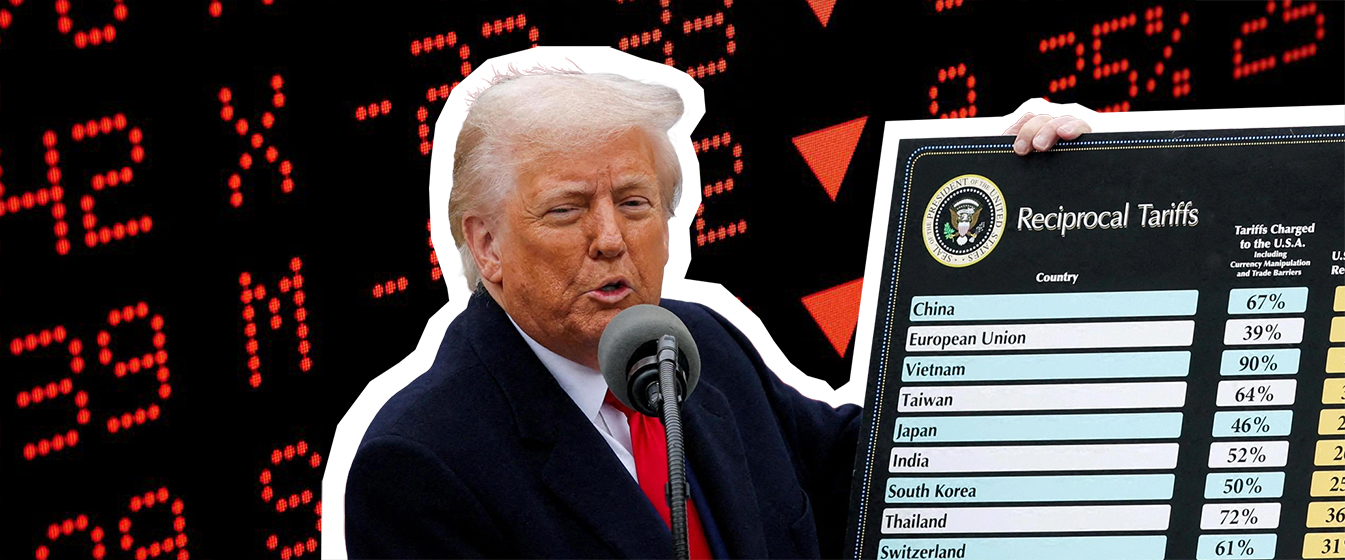Blog: Sustainability
Reducing food waste from your next event
3 March 2024 minute read

Event managers spend a lot of time, money and effort on feeding attendees at events.
And it’s not hard to see why.
Anyone in events will tell you that there are many things an attendee will forgive: the AV glitching, the keynote speaker not quite setting the world on fire – but problems with the food are a no-no.
An astonishing 42% of event feedback is about food.
People come to your events for the content and the networking, sure. But those attributes tend to be both nebulous and highly subjective. Food, on the other hand … People believe they’re paying for the food – and they’re quick to complain if they think it’s unappealing or there’s not enough of it.
Traditionally, this has led planners to over-do things on the F&B front – the idea being that a super-abundance of luxurious, appetising food will make customers feel welcome and valued – leading to better scores on that all-important satisfaction survey.
As a planner, F&B is one of the variables you can reasonably hope to control. Maybe they’ll like the speakers and make some great connections, maybe they won’t. But at least you can give them a decent lunch.
The nightmare scenario has always been ordering too little catering and standing there in horror as two attendees fight over the last cookie during the morning coffee break.
And despite years of lived experience to the contrary, we’re all fearful of the day coming when more attendees than expected turn up and not everyone gets enough to eat. How embarrassing would that be, right?
Of course, all of this leads to systemic over-ordering and massive amounts of food waste.
How much? The industry average for business events seems to be around 15% of catered food ending up in the trash.
I’m sure there will be amusing but spurious charts out there expressing the gross tonnage of event food waste in terms of how many elephants or battleships this equates to. I find those charts deeply silly, but trust me, it’s a lot.
Attitudes are changing
While planners used to fixate on the idea that attendees would judge them for a ‘nickel and dime’ approach if they cut back the size of that buffet, today’s sustainability-aware participants view the world rather differently.
Today you’re as likely to offend people with displays of conspicuous food waste as you are by having them stare each other down over the last brownie.
Indeed, a growing percentage of your attendees expect your event to have measures in place to minimise food waste and they’ll judge you harshly if you don’t. We know this because recent research found that 20% of delegate feedback to do with food is now criticism of perceived wastage.
Fortunately, there are some practical steps you can take to slash the F&B waste from your next event and lower your carbon footprint. Better yet, you can involve your participants in the process and there’s every chance you’ll save you money at the same time.
So where to start?
1Get better numbers
Understanding the amount of food you’ll actually need is the biggest lever you can pull when it comes to cutting potential wastage. Where possible, ask guests to RSVP and choose their meals ahead of time. They are more likely to let you know whether they’re attending so you can better cater for the right numbers.
Use your event registration technology to get a more granular view of exactly who is coming, when they’re coming, and what they’re planning to eat.
Depending on your set-up, menu data collection can be handled at the initial registration stage, or in a later confirmation mail, in the attendee app or even on-site.
Experiment with going beyond merely asking about dietary requirements per se. A client of ours recently ran event for hundreds of school kids where there was huge food waste. Ask people to specify dietary requirements and they’ll tell you allergies. They don’t tell you what they don’t like so the tuna mayo, and plain ham sandwiches ran out immediately while hundreds of the other (more sophisticated) sandwiches ended up in the trash.
Remember to take into account last-minute drop-out figures when thinking about numbers. As a rule of thumb, roughly 10% of guests won’t turn up on the day for paid business events. That number typically runs closer to 20% if the event is free-to-attend.
You’ll almost always need less food than you think.
Over-ordering and contingency meals are simply a response to a lack of information ahead of time. With more reliable data you can reduce the amount of waste.
2Bring guests into the conversation from the outset
If attendees knew how much some events waste, they’d be 100% on the side of the organiser trying to address that. So, speak to delegates from the outset and tell them you’re planning to minimise waste. This is a virtue and says a lot about the event’s values.
It makes delegates think about the cost of them not sharing dietary requirements or changing their minds, thus encouraging them to be more communicative. It also re-calibrates expectations around price and value. Of course there’s no lobster! Lobster is bad for the planet! Make them a part of the conversation, it will be really rewarding for them.
3Source locally
The further food has to travel, the greater the emissions and negative impact on the environment. Sourcing local food not only results in fewer food miles, it also supports the local economy.
Not only that, it strengthens the relationship between your event and smaller, expert local suppliers.
The caterers and producers who’re most in touch with the local area can be good sources of knowledge, with their fingers on the pulse of what’s grown and raised in season in that part of the country. They can hook you up with more sustainable food, and it’s likely to be fresher, higher quality and more special / memorable due to its local provenance.
4Prioritise low-carbon food
Knowing which ingredients come with a larger carbon footprint can help you to work proactively with venues and caterers, leading to a menu that puts responsibility at the core.
Obviously, switching to predominantly vegetarian or vegan menu options works to reduce emissions by up to 70%. Transitioning to as many meat-free options as possible and reducing dairy is a priority.

Mmmm delicious. But think of the carbon ...
More and more venues are creating new menu formats, based on plants then meat. There are events that have gone completely vegan without making a major issue of it. If the food is good and well judged, plenty of people won’t even notice.
A less dramatic option here is to use meat as a side or garnish, so it’s not the principal component on the plate.
The key here is not to marginalise people. Rather than having menus that scream ‘veggie’ or ‘vegan’ why not aim for just ‘great food’?
Seasonality is also a key aspect to consider. Choosing seasonal ingredients means fresher and tastier produce that hasn’t had to be hothoused to grow out of season. It’s cheaper to produce and cheaper to purchase. Again, everyone’s a winner.
We’re used to thinking that we should offer our customers as much choice as possible in all things. Choice is great, but it’s also a sure-fire way to increase waste. Having multiple menus requires more ingredients, which leads to a higher risk of extended supply chains and more ingredients going to waste.
Plus, choice seldom equals quality. Think about the best restaurants in the world. They all have extremely limited menus. The more your chefs focus in on a few great dishes using a few exceptional ingredients, the better the outcomes will be.
5Think about service
Some modest adjustments to the way you serve food can help minimise waste at your next conference. For example, using smaller buffet plates or bowls, avoiding plating food in advance and removing needless garnishes are a few ways to help reduce the amount of food that has to be disposed of.
It may look nice but resist the temptation to serve are pre sliced fruit on a skewers etc because if these are not eaten they are hugely wasteful. Offer bowls with whole pieces of fruit that can simply be re-offered later.
When serving snacks, choose items not individually packed so that people can serve only what they need instead of being forced to take a whole packet. This is also more environmentally friendly as it reduces the quantity of single-use plastics. Green events successful in sustainability opt for recyclable or recycled materials when packaging is necessary.
6Redistribute leftover food
While all these steps will help get your waste volumes down, some leftover food will always be a fact of life at most events, at least until the AI apocalypse kicks in for real.
So ask your venue or caterer what relationships they have in place to donate leftover meals and snacks to local charities or community groups. These days most cities have apps that match up events and restaurants with people who can use surplus food at short notice.
And it’s not just people. If your event generates food waste that’s not easily distributable to human beneficiaries, local farms, zoos and animal shelters may be able to use leftover raw produce.

Too many chicken ceasar wraps? These guys will help you out.
7Check whether the venue has composting facilities onsite
And if all else fails, the last thing you can do is try to keep your food waste out of landfill.
Composting reduces greenhouse gas emissions from landfill and helps to close the loop, providing compost for the next generation of food to be grown in. By doing their own composting on-site, venues can eliminate the negative carbon impact of vans driving around to collect food waste and take it to a central facility.
The more eco-conscious venues and catering suppliers are already investing in this capability, so don’t be shy about asking for it.
8Track and share your progress
After the event, review the amount of food that’s left over to see how your efforts are working and what can be optimised for next time. Make a note of unpopular choices so you’ll know to exclude them in future.
Tastes and attitudes, especially concerning the amounts and types of meat and dairy in menus, are changing every year as people consider their environmental footprint as well as their health. So it’s important to keep decisions under review for your particular community.
Lastly, don’t forget to share the good news with your attendees, sponsors and other stakeholders so that everyone present can feel good about having contributed to the change you’re leading.



